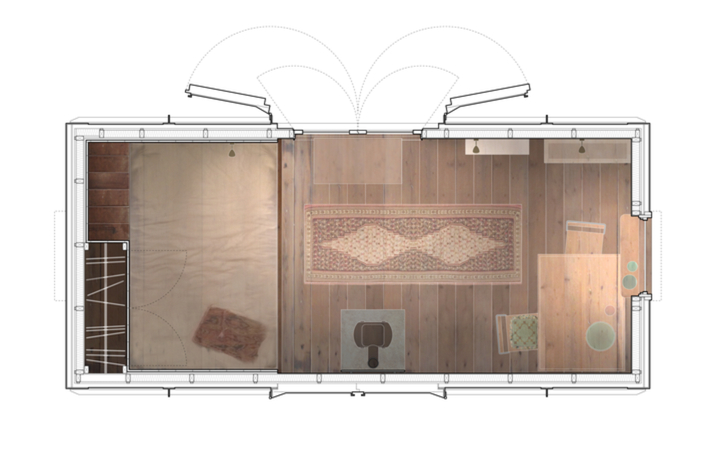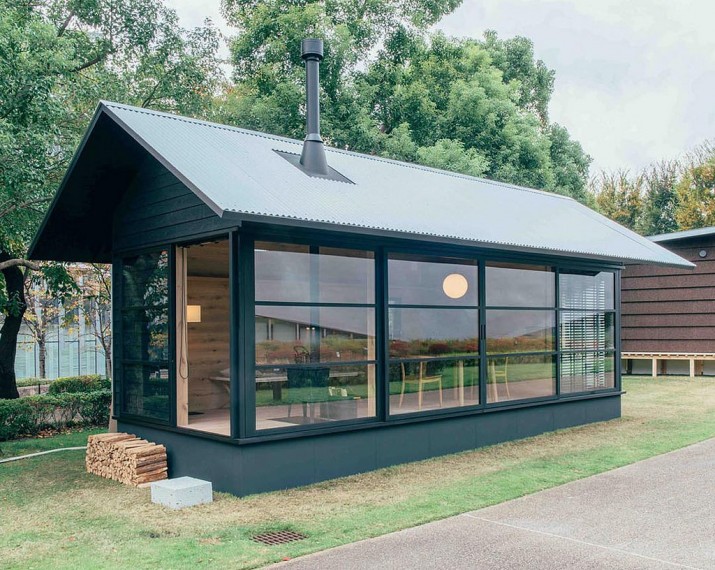
Btrax Design Company > Freshtrax > What Do Japanes...
What Do Japanese Aesthetic Values Have in Common with the Tiny Home Movement?
All across the country—and especially in urban pockets—tiny homes are popping up like mushrooms. Whereas the typical American home is about 2,600 square feet, the typical small or “tiny” home is only between 100 and 400 square feet.
Tiny homes are adopted by those interested in more financial freedom (the costs of buying and owning a larger house being prohibitive for many), casting a smaller environmental footprint, and simplifying. The tiny home movement continues to attract adopters, admirers, and attention, both here and abroad.
Though space is at a premium in many U.S. cities (btrax’s own San Francisco epitomizing the housing crunch facing many urban dwellers), Asian cities compete on a global level in terms of housing costs. Cities in Japan, specifically, deal with space limitations that require densely populated housing units and innovative thinking around building to maximize efficiency with minimal land availability.

Image: Tropical studio/Shutterstock
Traditional Japanese values have evolved to suit this comparable “tiny home” situation. Here are four traditional Japanese aesthetic values that are evidenced in the tiny home movement.
Fukinsei
This concept is the embrace of symmetry or irregularity. Imperfection may not seem an ideal aspired to by the tiny home movement adherents, but certainly the practicality of odd- and uneven-shaped buildings trumps the cookie-cutter sameness exemplified by McMansions.
Consider the unusual structure created by college kids from Vermont. The pod-shaped home is aerodynamic to allow for easy towing, but its appeal is more than just its mobility. Its uniqueness and lopsidedness give it a beautiful strangeness.
Kanso
Probably no other concept better exemplifies the tiny home movement than this, best translated as simplicity. Small houses incorporate dual-purpose features and multifunctional furniture, as well as take advantage of space-saving equipment and appliances made possible by advances in technology.
Where a bulky TV set once required a stand, a thin screen can now by mounted on the wall. According to pioneering architect Michael Chen of MKCA, “The ambition is always to maximize usefulness while reducing visual noise.”Certainly, a tiny home has no room for clutter.

Image: Ebanie/Shutterstock
This is the beauty of subtly profound grace, that which is not obvious. Hideaway furniture and transforming walls is an oft necessary feature of tiny homes.
Consider MKCA’s Unfolding Apartment, a Manhattan studio that transforms into a bedroom and then back into a space for entertaining guests with a few adjustments. A cabinet hides a bed, night stand, closet, home office, library, and lighting fixtures; when closed, the apartment is open and spare.
Datsuzoku
This value prioritizes originality, encompassing those things which are unbounded by convention. As a movement, tiny homes is clearly a departure from the typical.
While American ideals preach “bigger is better,” the tiny homes movement breaks with the norm, prioritizing the importance of taking up less space and creating a smaller environmental footprint. And a quick look inside any tiny home will impress upon its break from the norm.

Image:Designmilk / Featured image: Zastolskiy Victor/Shutterstock
Of course, there may be no better exemplars of the tiny home movement than those in Japan itself. From Muji’s huts to the coolest micro homes, there is no shortage of aesthetic and functional appeal to these smaller-than-normal houses.
Interested in taking your business to Japan? Or simply interested in learning more about Japanese design and business culture? Check out our 3-day workshop below! ↓







